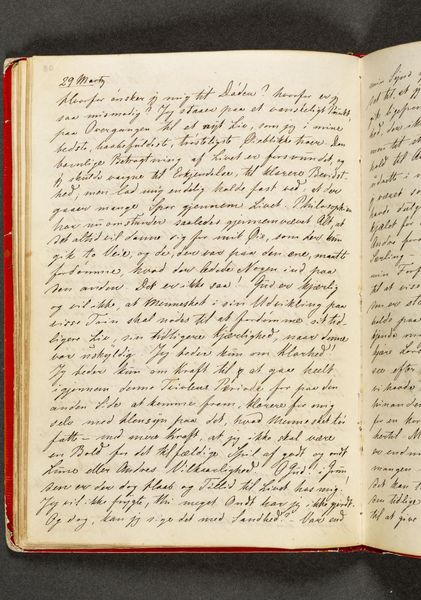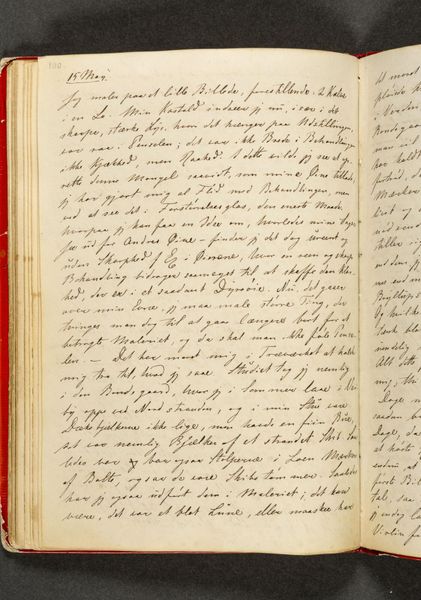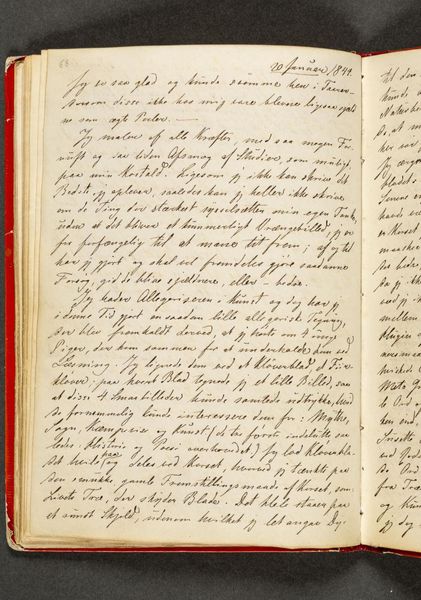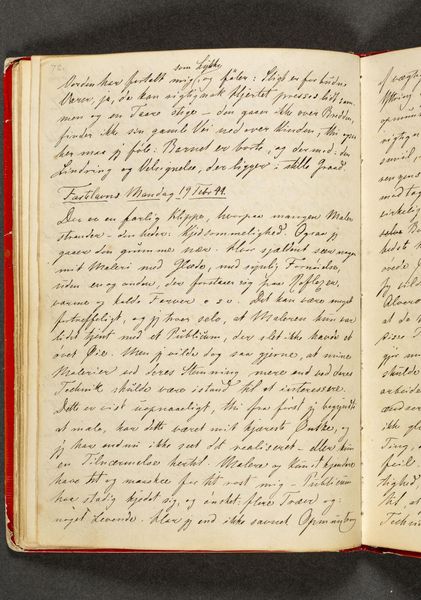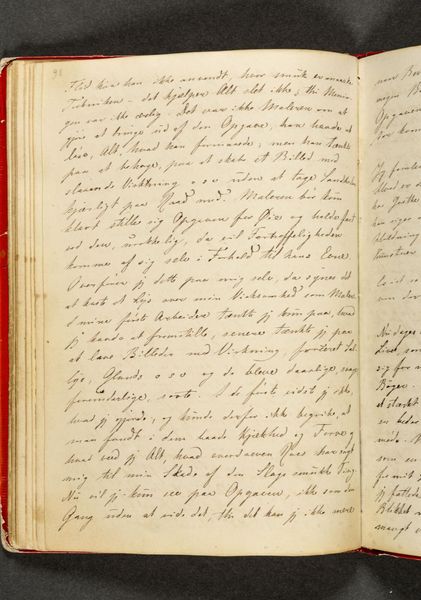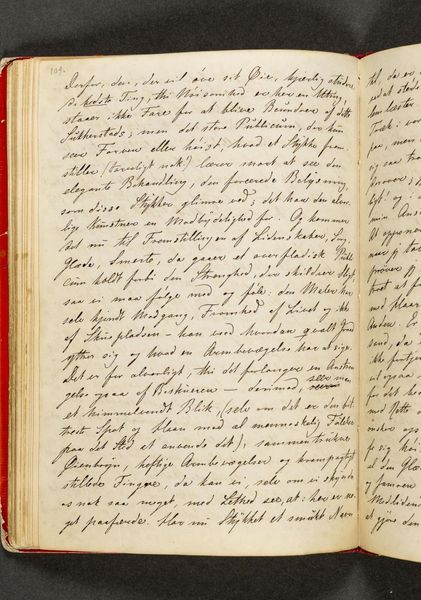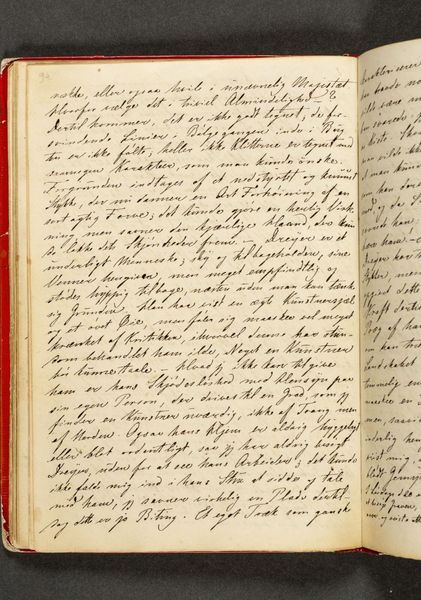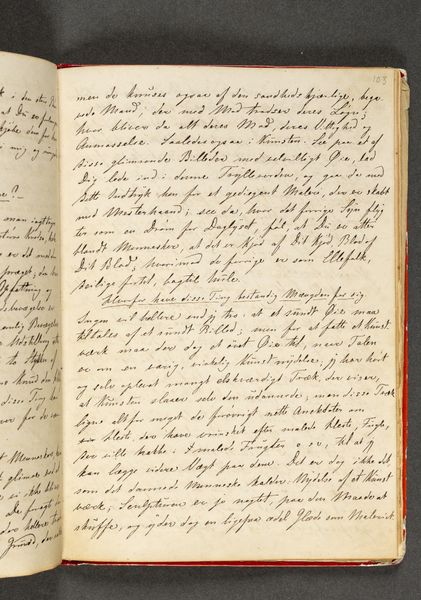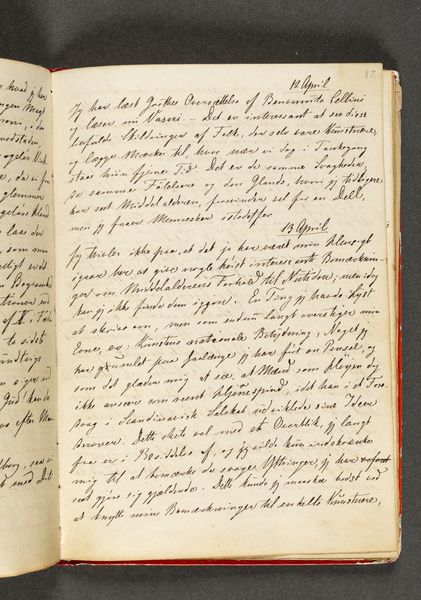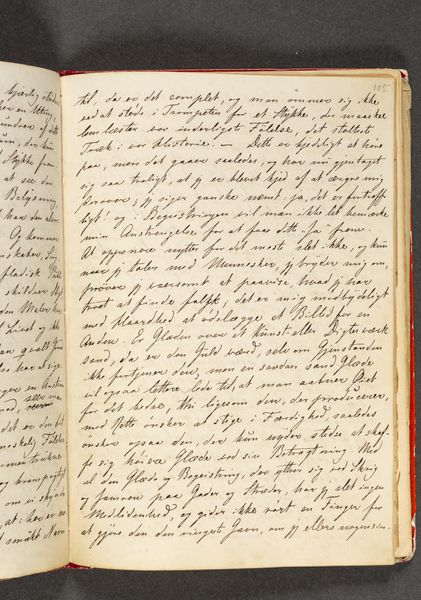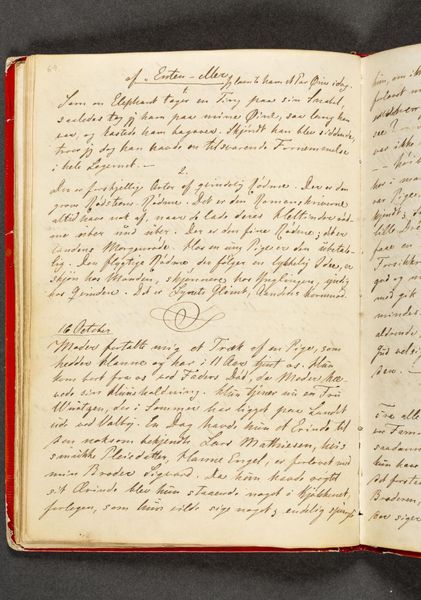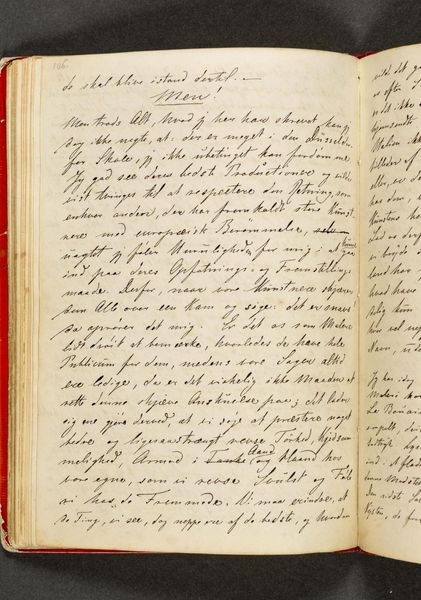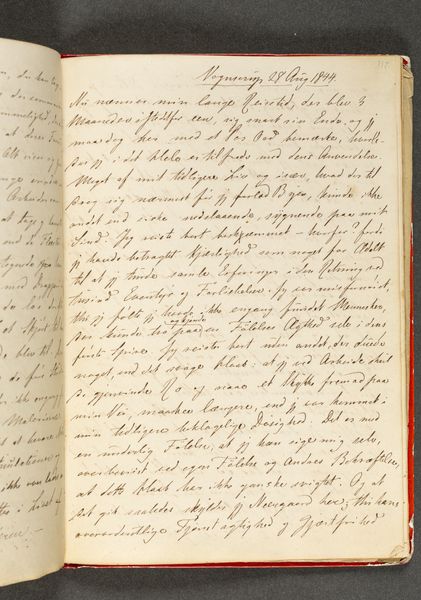
drawing, paper, pencil, pastel
#
drawing
#
narrative-art
#
sketch book
#
paper
#
personal sketchbook
#
intimism
#
romanticism
#
pencil
#
sketchbook drawing
#
pastel
#
monochrome
Dimensions: 192 mm (height) x 133 mm (width) (bladmaal)
Editor: Here we have a page from Johan Thomas Lundbye’s diary, "Dagbog. Side 90," created in 1844. It’s a pencil and pastel drawing on paper. It’s very intimate and personal feeling; you get the sense of peering into the artist’s own thoughts. What do you see in this piece from a historical perspective? Curator: This work really highlights the crucial role of personal sketchbooks in understanding Romanticism, doesn't it? While we often view Romantic artists through the lens of grand landscapes and heroic narratives displayed in salons, works like this sketchbook page pull back the curtain. This gives access to a glimpse of an artist's more informal creative space. Lundbye's diary entries, filled with both text and visual sketches, speak to the evolving role of the artist in society. What does this page communicate to you? Editor: Well, I get a sense of the artist wrestling with ideas, almost thinking aloud on paper. The writing feels immediate. I'm also interested in the blending of text and image. How typical was this for artists at the time? Curator: Combining text and image wasn't necessarily new, think of illuminated manuscripts. But its context shifted as the role of art and the artist shifted. By the mid-19th century, artists began to explore the expressive potential of both words and images in a much more introspective way. The art market also had an influence here - sketches from private sketchbooks weren't always made to be shown publicly. The idea of “art for art’s sake” comes into play, focusing on creative expression more than a finished commercial product. This challenges us to think about what we consider "art." Editor: That makes so much sense! I never considered how much the art market and cultural expectations could influence even a private sketchbook. Curator: Precisely. This seemingly simple diary page encapsulates so much about the changing role of the artist, and about the political influences that can make art personal. Editor: This conversation has really opened my eyes to how artworks – even seemingly private ones – are tied to broader cultural and economic forces.
Comments
No comments
Be the first to comment and join the conversation on the ultimate creative platform.
